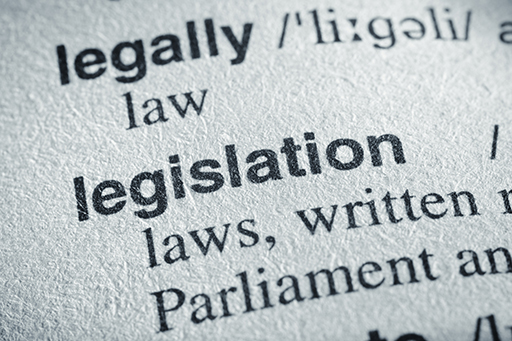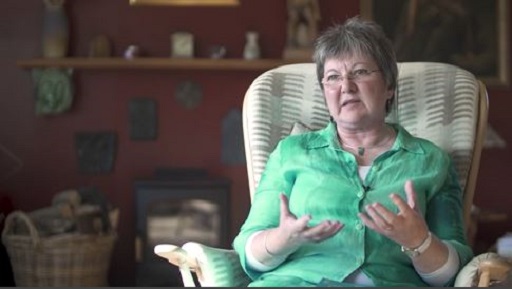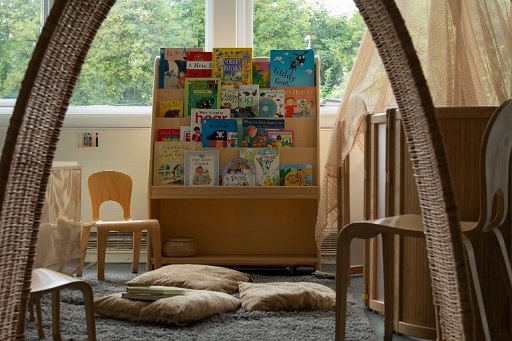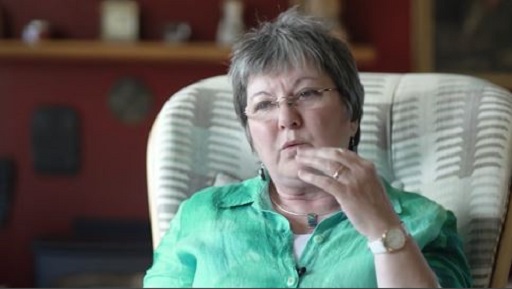Use 'Print preview' to check the number of pages and printer settings.
Print functionality varies between browsers.
Printable page generated Friday, 21 November 2025, 3:37 PM
Policy and legislation for children who require additional support
Introduction
Having a good understanding of policy and legislation that can support you at work is an important part of your role as an ELC practitioner. Having a good understanding of Scottish policy and legislation will give you the confidence to develop policies in your settings that will help you and your colleagues to develop good practice.
Scottish Government legislation and policy is influenced by global policy – The United Nations Convention on the Rights of the Child (UNCRC, 1989). The UNCRC was launched in 1989 by the United Nations as a global initiative aimed at improving children’s lives, influencing how children’s education, health and childcare are shaped. Article 12 is the right for children to have their voice heard. In the context of ELC practice, listening to children – not just what they tell us through language, but by what they tell us through non-verbal communication – is a strongly held value.
This section will summarise key policy and legislation that relates to ELC in Scotland. You will then be encouraged to consider the connections between additional support for learning and wider policy, guidance and legislation for ELC settings. For instance, how does Scottish policy and legislation promote and maximise the inclusion of children who require additional support? You will be asked to consider how your values and your setting reflects the principles of inclusion in its policies.

The content of Week 6 links to module learning outcome (LO) 6:
LO6 Understand legislative duties that support children with ASN.
By the end of Week 6 you will be able to:
be familiar with and know where to find key policies
recognise the connection between policy and practice
be familiar with policies in your setting and local authority.
Continue to 6.1 Finding out about legislation and policies.
6.1 Finding out about legislation and policies
Before finding out more about legislation and policies, here are some definitions of what is meant by these terms.
Legislation is a legal act that is passed by government. It is essential that the law is followed.

Policy is defined by Fitzgerald and Kaye (2016, p. 3) as:
An attempt by those working inside an organisation to think in a coherent way about what it is trying to achieve (either in general or in relation to a specific issue) and what it needs to do to achieve it.
Therefore, policy can be national (if it is the government’s approach) or local (which can refer to a local authority). Policies can be even more local because they can be written for ELC settings.
Why legislation and policy are important
Aside from understanding what they mean, it’s important to appreciate why legislation and policy exist. To illustrate this point, read the following extract from a document on Disability History Scotland (2015) written in 1874:
Attendance Officers report that many disabled children rarely if ever go to school. In response, William Mitchell, Chairman of the Attendance Committee of the Glasgow School Board, establishes the ‘Association for Visiting and Aiding Permanently Infirm and Imbecile Children’.
This was the start of education for children in Glasgow who required additional support. However, the education was provided in their homes and away from other children of their age. This meant that children were segregated from mainstream education.
More than 145 years later, attitudes and provision have changed considerably. In Guidance on the presumption to provide education in a mainstream setting (2019, p. 7), the Scottish Government issued the following statement:
The presumption of mainstreaming enshrines the right of all children and young people with additional support needs to learn in mainstream schools and early learning and childcare settings. Children and young people must be present, in person or engaged via virtual means, in order to benefit from learning. Presence is a fundamental requirement of inclusive practice.

Legislation and policy both have an influence on, and are influenced by, public attitudes. Current policy reflects the belief that children who require additional support have the right to be included in mainstream education.
This belief is reflected in the Scottish Government’s (2019, p. 4) definition of inclusive education:
Inclusive education in Scotland starts from the belief that education is a human right and the foundation for a more just society. An inclusive approach which recognises diversity and holds the ambition that all children and young people are enabled to achieve to their fullest potential is the cornerstone to achieve equity and excellence in education for all our children and young people.
Summary of Scottish Government policy and legislation for children with ASN
Table 6.1 summarises some of the key legislation and policy relating to supporting children with additional needs.
| Legislation or policy | Date | Aim |
|---|---|---|
Supporting Children’s Learning (Additional Support for Learning) (Scotland) Act 2004 Legislation |
Amended in 2009 and 2017(b) | To ensure that all children are provided with the necessary support to help them to achieve their full potential. The Act is structured around the concept of support being needed for any reason, and for short- or long-term periods determined by the individual learning needs of the child or young person. The key duties on education authorities are to identify, make provision for and review provision for the additional support needs of children and young people for whose education they are responsible. The Education (Additional Support for Learning) (Scotland) Act 2004, as amended, provides a framework for local authorities and other agencies to support all children with their learning. It introduced the concept of additional support needs, gave parents and pupils new rights, and placed duties on local authorities and other agencies. It also set in place the processes for resolving differences for families and authorities – mediation, dispute resolution and the Additional Support Needs Tribunal. |
Getting it Right for Every Child (GIRFEC) Policy |
Scotland’s national framework for improving children young people’s wellbeing. Introduced in 2006 |
To improve children’s wellbeing. Supports families by making sure children and young people can receive the right help, at the right time, from the right people. The aim is to help them to grow up feeling loved, safe and respected so that they can realise their full potential. The GIRFEC approach aims to put the best interests of the child at the heart of decision-making. GIRFEC is the foundation for work with all children and young people in Scotland. A key element of GIRFEC is that all services working with children and young people must play their part in promoting, supporting and safeguarding their wellbeing. |
Children and Young People (Scotland) Act 2014 Legislation |
2014 | To make Scotland the best place to grow up by putting children and young people at the heart of planning and delivery of services, and ensuring that their rights are respected across the public sector. The Act made several changes to the law across many areas, including changes to early learning and childcare, free school meals for children in P1–3, and extra support for looked-after children and care leavers. It also puts responsibilities on Scottish Ministers and public bodies to consider how they can promote children’s rights, and requires them to report on their progress on this every three years. |
Health and Social Care Standards Policy |
June 2017 | The Standards direct attention to the child’s experience. They will help everyone focus on what really matters – the experience of the person who uses care. |
Realising the Ambition: Being Me – National practice guidance for early years in Scotland Policy |
February 2020 | This guidance increases expectations of high quality but still provides the necessary support for all who work within the sector and beyond. |
If you would like to find out more about policy and legislation that affects children with additional support needs you might like to visit the two sites below:
Enquire – The Scottish advice service for additional support for learning
Children and Young People’s Commissioner Scotland
The next section looks at how legislation and policies work in practice.
6.2 How can legislation and policies work in practice?
Sometimes it may seem as though legislation and policy are very distinct and separate from practice. However, that does not have to be the case. As discussed during the module, the qualities and skills that you have already make you, as Elizabeth Henderson said in Week 1, ‘the most powerful tool in the toolbox’.
To illustrate this point, listen to this short account of practitioner Elizabeth Henderson on the relationship between practice and worries about making sure you are following correct guidance or policy.
Activity 6.1 The link between legislation, policy and practice
Watch the video below and reflect on Elizabeth’s views on leglisation, policy and practice.

Transcript: Video 6.1 Elizabeth Henderson on leglisation, policy and practice
Discussion
Elizabeth explains that if ELC practitioners put the child at the centre using a holistic approach and really work with the child, your experience will help you. Personal qualities of being warm and inviting will help the child feel relaxed. In other words, high-quality practice will help you to meet the policy aims. Put very simply, the aims of the Scottish Government’s legislation and policy is to ensure that all children receive the very best education and care. This aim is even more important for children who require additional support.
The next section looks at how the skills and qualities associated with high quality ELC practice can match Scottish Government policies.
Examining some links between legislation, policy and practice
In Week 4 you considered the story of Arianna. You reflected on how best to support her parents to seek expert help following a concern about her eye health. You might wish to remind yourself about this example.
As you reflected on Arianna’s situation you linked the practitioners’ observations with wellbeing indicators. The GIRFEC Wellbeing Indicators are one important way of structuring your thinking about a child’s support needs.
Now consider another set of principles and standards – the Health and Social Care Standards: my support, my life (Scottish Government, 2017a). The standards underpin the Care Inspectorate’s inspection process. The standards direct attention to the child’s experience, stating that ‘everyone is entitled to high quality care and support tailored towards their particular needs and choices’ (p. 2).
The five principles of the Health and Social Care Standards are listed below, along with some examples of how the principles of the Standards can be met. As you read the list, think about the statements from a child’s perspective.
Health and Social Care Standards – the principles
Dignity and respect
- My human rights are respected and promoted.
- I am respected and treated with dignity as an individual.
- I am treated fairly and do not experience discrimination.
- My privacy is respected.
Compassion
- I experience warm, compassionate and nurturing care and support.
- My care is provided by people who understand and are sensitive to my needs and my wishes.
Be included
- I receive the right information at the right time and in a way that I can understand.
- I am supported to make informed choices, so that I can control my care and support.
- I am included in wider decisions about the way the service is provided, and my suggestions, feedback and concerns are considered.
- I am supported to participate fully and actively in my community.
Responsive care and support
- My health and social care needs are assessed and reviewed to ensure I receive the right support and care at the right time.
- My care and support adapts when my needs, choices and decisions change.
- I experience consistency in who provides my care and support and in how it is provided.
- If I make a complaint it is acted on.
Wellbeing
- I am asked about my lifestyle preferences and aspirations and I am supported to achieve these.
- I am encouraged and helped to achieve my full potential.
- I am supported to make informed choices, even if this means I might be taking personal risks.
- I feel safe and I am protected from neglect, abuse or avoidable harm.
Now complete the following activity.
Activity 6.2 Linking children’s experiences to the National Standards on Health and Social Care
Before moving on to explore policies further, take a moment to think about the children you work with. If you are not currently working with children, think about one of the examples in the module so far. Hold these children in your mind as you move to the next section where you will think about statements about policy and best practice guidelines in your setting.
6.3 Policies in your setting
Policies at work are often associated with management. In fact, all ELC practitioners have a responsibility to be aware of the policies in place, and they should know that they can influence the way they are written and implemented. This awareness is important, because the policies implemented reflect the ethos of the environment and the aims need to be shared to be successful in practice.

In the following activity you’ll consider the policies related to working with children with ASN and their families in your setting.
Activity 6.3 Policies in your own setting
Take a look at the policies in your setting.
- What are the underlying values and principles that influence your practice?
- How do the policies help you to work with children who require additional support?

Discussion
There is no single correct way of writing policies. Due to the structure of a local authority and where it’s located, each setting will be different. You may have a policy for your setting on how you support children with additional needs or you may find that many of the policies include the needs of children with ASN as a thread that runs through all policies.
Here are some points for you to reflect on in relation to the policies in your setting:
- Do your policies reflect the principles of Scottish Government policy? For example, are there any references to Getting it Right for Every Child?
- Do policies include information about who the Lead Professional is and who is responsible for liaising with other professionals, such as maintaining contact with a local health visiting team?
- Do your policies include information about communicating and working with families in sensitive and supportive ways?
- Are policies re-visited and updated considering new government legislation and policy?
Your role in influencing policies and practice in your setting
All ELC practitioners have a role to play in creating inclusive policies that can shape inclusive practice. As already discussed during the previous weeks, your skills and qualities can make a difference to children’s experience in their setting. Positive interactions and warm relationships in your day-to-day interactions can help them to feel that they belong in the setting. A warm ethos in an ELC setting will enable children to flourish and meet their potential.
As well as contributing to promoting a policy of developing positive relationships with children and families, you may be able to lead other changes such as the physical environment in your setting. How a room is laid out can be critical to how much a child can access activities and be included.
It is often the small details that matter more than you might think. Making sure that families and other professionals feel welcome and included makes an important contribution to how you work with others. As discussed in Week 4, simply ensuring that everyone is offered a cup of tea might change the atmosphere and even the outcome of the meeting.
As much as we might want to, it is hard to change everything at once. It can help to spend time looking and thinking about an area of practice or the layout of a room and identify what the gaps are.
Take a look at Figure 6.9.

This might look like an inviting space: it has different textures, natural materials and natural light, and there is a selection of books to look at. But how might it look to a child using a wheelchair with the aid of an adult? Is there only one way in? Is there enough room to be side by side with other children?
You need to consider the preferences and needs of the children you are working with. But you also need to think about being flexible and open to change in response to how children use the space.
Perhaps there are too many invitations to climb in this layout? Are there children in your care who are learning how to take care of furniture and resources who might find it hard to resist climbing? Instead of spending time talking to them about their choices, perhaps you could arrange the area differently to make climbing less appealing. You would need to make sure climbing opportunities were available elsewhere.
Activity 6.4 Consulting with children
Whatever changes you make, you need to ensure that (where appropriate) you do it in consultation with children. For instance, when you assess how inclusive the environment is, you might decide that a layout isn’t working, but perhaps you’ve not noticed how the children use the space. There may be a favourite corner or a secret den that has passed you by. Take time to observe and then talk your ideas through with children.
It might be necessary to make a change. You can still discuss it with children, explaining why something needs to change, and you can suggest that you all see whether it works. By keeping conversations going about your environment, you are encouraging children to consider the space to be theirs. If they feel ownership and control over the environment they will be encouraged to take care of it.
This approach is supported by the National Health and Social Care Standards. Which of the Standards do you think are relevant here? Read the detailed standards (pp. 4–15) and note down which ones are being met by taking a consultative approach.
Feedback
Perhaps you considered these points?
Be included
- 1.9 I am recognised as an expert in my own experiences, needs and wishes.
- 4.6 I can be meaningfully involved in how the organisations that support and care for me work and develop.
Dignity and respect
- 2.3 I am supported to understand and uphold my rights.
In this case this includes Article 12: I have the right to be listened to and taken seriously. (You can read more rights here: https://www.cypcs.org.uk/ rights/ uncrcarticles)
Wellbeing
- 5.22 I experience an environment that is well looked after with clean, tidy and well-maintained premises, furnishings and equipment.
At the end of this section the extension activity includes resources that you might find helpful if you are considering how to assess or audit your environment.
6.4 Reflecting on your learning
This is the last section of the six-week module, so it’s time for a final reflection.

Look back over the notes you have made in your reflective journal. What have you learned?
You may have found out more about a disability or medical condition. Perhaps you know yourself better and you are more aware of your unconscious biases? Perhaps you have a new strategy for improving your practice: will you be working with parents differently as a result of completing this module?
What were the inspiring moments for you? Were there times when you thought, for example, ‘That’s something I’ve always wondered about’, or ‘I’ve never thought about that before’, or ‘Well, that makes a lot of sense!’
Make a note of any personally inspiring moments in your learning journal.
Now choose three words to describe your most inspiring moment and add them to the module reflection thread in the forum.
Listen to some final thoughts from Elizabeth Henderson, where she shares the three reflective questions she asks herself if she is feeling muddled or weighed down in her practice. Perhaps these will be a useful set of questions to take with you from the module:

Transcript: Video 6.2 Three reflective questions
Will you take these three thoughts with you into your practice?
Reflection activity
Use your saved learner journal to make notes about this final week of learning, and also make notes on the most valuable learning outcomes from the whole module. (You can also type into the box below and then copy and paste it into your learner journal.)
Remember to save your learner journal and keep it for future reference.
Reflection table for Week 6
| Source of knowledge | |
| Key point | |
| How has this made me think? | |
| So what have I learned? | |
| Next steps: what can I improve or what more do I need to know? | |
| Next steps: what improvements can I make to my practice? |
(Adapted from Appleby and Hanson, 2017)
Now it’s time to complete the End-of-course quiz.
Summary
The aim of this module has been to help you to recognise that, as an ELC practitioner, you have many resources within you that are essential for working with children who require additional support. We hope that the learning on this module has helped to increase your knowledge about specific conditions, legislation and policy, and about working with parents and other professionals.
Please do not view this as the end of your learning. We all need to continue to develop our knowledge and understanding to remain effective ELC practitioners.
Wishing you the best of luck in your important work.
Extension activity
Extension activity – Assessing your environment
There is a range of online resources to help you assess or audit your physical environment, or reflect on how you work together as a team. (These are listed below this activity.)
You might find it helps to start with the following table, which comes from How good is our early learning and childcare (p. 13). This table helps you assess how well you provide personalised support. Note that the guidance doesn’t tell you how to achieve highly effective practice – that is up to you.
| Features of highly effective practice | Challenge questions |
|---|---|
Self-evaluation is at the heart of everything that we do in our setting. All of our practitioners are actively engaged in continuously evaluating and improving our setting. The views of children, parents/carers and families are effectively used to improve the life and work of the setting. Everyone involved with the setting’s community has a shared understanding of its strengths and improvement needs. Parents/carers have regular opportunities to support improvement by participating in a range of formal and informal activities. All practitioners have a clear focus on monitoring and evaluating the quality of children’s learning and on tracking their progress and achievements. They work effectively as a team. There is a strong ethos of improvement through sharing practice, and through peer support and challenge. Professional learning activities for all practitioners are clearly linked to the results of self-evaluation and identified areas for improvement. Our practitioners are inward-, outward- and forward-looking in their evaluation and improvement activities. Our learning and developments are informed by making very effective use of the data we get from our learning community, as well as up-to-date research from Scotland and beyond. Our practitioners have high aspirations and expectations for all children and families. We use a well-informed range of approaches to assess children’s progress across their learning. |
How well do all practitioners understand their responsibility in improvement through self-evaluation? How has using Building the Ambition led to improvements in children’s experiences? What do we know about the community that children live and learn in? How are we using this knowledge to improve outcomes for children? How effectively do we identify our strengths as professionals and as a setting, to improve children’s experiences and progress? What progress are we making in addressing our identified areas for improvement? To what extent are all stakeholders (children, practitioners, parents/carers and partners) involved in self-evaluation and planning for improvement? What approaches do we use to support our children to reflect on and evaluate our practice and provision? How do we demonstrate that all practitioners are involved in and lead aspects of improvement in our setting? In what ways are our practitioners encouraged to reflect on and share their own practice in taking forward agreed areas for improvement? To what extent do we look inward, outward and forward in our evaluation and improvement activities? What evidence do we have that changes we have made are as a result of our self-evaluation and have improved outcomes for children? |
If you do not feel in a position to influence how personalised support is achieved across your setting then start where you can make changes. That might be your own practice. You might want to complete specialist training. It might be the layout of a room, as suggested above. It might be the way you interact with a child’s family. Document what you do and what the impact is in a reflective diary. You could share you experience with colleagues and that way you might be able to bring about more positive change across your organisation.
Here are other documents that relate to auditing the environment:
Care Inspectorate (2019) My world outdoors [Online]. Available at https://hub.careinspectorate.com/ how-we-support-improvement/ care-inspectorate-programmes-and-publications/ my-world-outdoors/ (Accessed 10 November 2019).
Irresistible Learning (2019) Early Years 360° Environment Audit [Online]. Available at https://irresistible-learning.co.uk/ resource/ early-years-360-environment-audit/ (Accessed 10 November 2019).
Casey, T. and Robertson, J. (2019) Loose Parts Play Toolkit. 2nd Edition [Online]. Available at https://www.inspiringscotland.org.uk/ wp-content/ uploads/ 2019/ 07/ Loose-Parts-Play-Toolkit-2019-web.pdf (Accessed 10 November 2019).
National Improvement Hub (2019) How good is our early learning and childcare? [Online]. Available at https://education.gov.scot/ improvement/ self-evaluation/ How%20good%20is%20our%20early%20learning%20and%20childcare? (Accessed 10 November 2019).
Take your learning further
Making the decision to study can be a big step, which is why you'll want a trusted University. The Open University has over 50 years’ experience delivering flexible learning and 170,000 students are studying with us right now. Take a look at all Open University courses. However, if you wish to continue studying early years courses, you may wish to look at our BA Early Childhood and BA Education Studies (Primary).
If you are new to university level study, find out more about the types of qualifications we offer, including our entry level Access courses and Certificates.
If you are not ready for University study, you can browse over 900 free courses on OpenLearn.
References
Further reading
Acknowledgements
Our acknowledgements are a list of professionals, parents and organisations who have contributed to this module or who have made it possible.
Faculty Production Team at the Open University:
Jackie Musgrave and Sarah Burton, Academic leads and Katy Thomas, Project Manager
OpenLearn Create Production Team at the Open University
Caroline Steggles, Senior Project Manager; Michael Hackett, Digital Development Editor and Anna Page, Senior Producer
Open University in Scotland:
Page Munro, Contract Manager and other colleagues who have supported this work
Media Production:
Michael Grant, Director of Raw Film Productions
External Contributors:
Max Alexander, Play Worker
Pamela Anderson, Parent
Liz Auld, Early Years Practitioner (retired)
Joanne Gibson, Early Years Speech and Language Therapist
Dr Elizabeth Henderson, Early Years Specialist working in a Scottish Local Authority
Emma Watt, Project Worker, Multi Cultural Family Base,
Organisations:
Multi-cultural Family Base, Cowgate Under 5s Centre, The Yard Edinburgh, Down's Syndrome Scotland, City of Edinburgh Council, Clifton Hall School, Fort Early Years Centre, and Scottish Book Trust.
The Scottish Government:
Carole Campariol-Scott and Halle Brown at Scottish Government
The steering group
Pilot Participants
The participants in the pilot of the module who gave their time and offered valuable feedback to improve the module
Special thanks
The Module Team would also like to acknowledge and thank all the children whose lives and experiences have informed our learning. We have not included children’s voices directly in the module. We hope that their experiences speak through our accounts of their lives but we are aware that we are not hearing their voices directly. The case studies and stories about children are mostly fictional (based on our experiences) or are anonymized with the exception of Eilidh. Thank you to parents who have enabled us to describe their children’s lives.
Every effort has been made to contact copyright holders. If any have been inadvertently overlooked the publishers will be pleased to make the necessary arrangements at the first opportunity.
Grateful acknowledgement is made to the following sources:
Collection image: Diverse group of four children are playing together at the park: © Olga Enger/iStock/Getty Images Plus
Module image: Hands of child and adult: © Expensive/Shutterstock
Introduction Figure 1: © mihailomilovanovic/Getty Images
Figure 1.1: © VioletaStoimenova/Getty Images
Figure 1.2: © ljubaphoto/iStock/Getty Images Plus
Figure 1.3: Scottish Government (2017) Supporting Children’s Learning: Statutory Guidance on the Education (Additional Support for Learning) Scotland Act 2004x. Reproduced under the terms of the OGL, http://www.nationalarchives.gov.uk/ doc/ open-government-licence/ version/ 3
Figure 1.4: Mason, M. and Rieser, R. (1994) Altogether Better (from special needs to equality in education), Charity Projects/Comic Relief.
Figure 1.5: © fotosipsak/iStock/Getty Images Plus
Figure 1.6: © oksun70/iStock/Getty Images Plus
Figure 1.7: © IL21/iStock/Getty Images Plus
Figure 1.8: © choja/iStock/Getty Images Plus
Figure 2.1: © Hispanolistic/Getty Images
Figure 2.2: © Rawpixel/iStock/Getty Images Plus
Figure 2.3: © Sasiistock/iStock/Getty Images Plus
Figure 2.4: Casey, T. and Robertson, J. (2019) Loose Parts Play Toolkit, Edinburgh, Scottish Government [Online].
Figure 2.5: Play Radical, https://playradical.com/
Figure 2.7: Mother Natured, https://mothernatured.com/
Figure 4.1: © Sladic/iStock/Getty Images Plus
Figure 4.2: © A&J Fotos/Getty Images
Figure 4.3: © SolStock/iStock/Getty Images Plus
Figure 4.4: Scottish Government (2017) GIRFEC wellbeing resources (SHANARRI), https://www.gov.scot/ publications/ shanarri/. Reproduced under the terms of the OGL, http://www.nationalarchives.gov.uk/ doc/ open-government-licence/ version/ 3
Figure 4.5: © lostinbids/Getty Images
Figure 5.2: © Olesia Bilkei/123 Royalty Free
Figure 5.3: © Martinbowra/iStock/Getty Images Plus
Figure 5.4: © Rawpixel/iStock/Getty Images Plus
Figure 5.5: © ChrisBaynham/iStock/Getty Images Plus
Figure 5.7: © SDI Productions/iStock/Getty Images Plus
Figure 6.1: © tumsasedgars/iStock/Getty Images Plus
Figure 6.2: © JLGutierrez/Getty Images
Figure 6.3: © Mehaniq/iStock/Getty Images Plus
Figure 6.4: © monkeybusinessimages/iStock/Getty Images Plus
Figure 6.5: © Riccardo Cirillo/iStock/Getty Images Plus
Figure 6.7: © MicroStockHub/iStock/Getty Images Plus
Figure 6.8: © tumsasedgars/iStock
Figure 6.10: © fizkes/iStock/Getty Images Plus
Video 4.2: © BBC